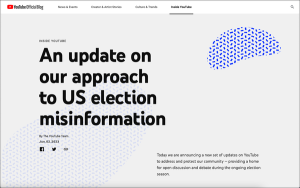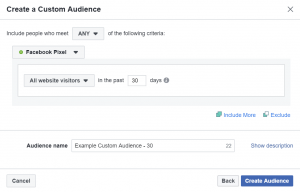You can’t know where you’re going if you don’t know where you are — and columnist Rebecca Lieb’s process for performing a content audit will help you determine just that!

A content audit is the cornerstone of content strategy, which governs content marketing. The aim is to perform a qualitative analysis of all the content on a website (or in some cases, a network of sites and/or social media presences — any content for which your organization is responsible).
Why perform a content audit, which admittedly is a painstaking and exacting exercise? Lots of reasons.
First and foremost, an audit helps determine if digital content is relevant, both to customer needs and to the goals of the organization. It can help answer important questions: Is content accurate and consistent? Does it speak in the voice of the organization? Is it optimized for search? Are tools and software, such as the content management system (CMS) up to the task of handling it?
Essentially, an audit helps assess needs, shape content governance, and help determine the feasibility of future projects.
Create A Content Inventory First
Start by recording all the content on the site into a spreadsheet or a text document by page title or by URL. Organize this information in outline form, i.e. section heading, followed by sub-sections and pages.
If it’s an e-commerce site, these headings and sub-headings might be something like: Shoes > Womens Shoes > Casual Shoes > Sandals > Dr. Scholl’s. An informational company website’s headings might look more like: X Corporation > About Us > Management > John Doe.
Content strategist Kristina Halvorson recommends assigning a unique number to each section, sub-section and page (e.g., 1.0, 1.1, 1.1.1, etc.). This can help tremendously in assigning particular pieces of content to the appropriate site section. Some content strategists also color-code different sections on spreadsheets. It gets down to a matter of personal preference, as well as the size and scale of the audit in question.
It’s also highly recommended that each section, sub-section or page contain an annotation regarding who owns each piece of content, as well as the type of content: text, image, video, PDF, press release, product page, etc. Is it created in-house? If so, by whom? Is it outsourced (third-party content, RSS feeds, blog entries, articles from periodicals)? Who’s responsible for creating, approving and publishing each piece?
The resulting document is a content inventory.
Conducting The Content Audit
Once you’ve created a content inventory, it’s time to perform the content audit. This will essentially involve digging into the quality of the content.
As you go through the audit, it’s helpful to assign a grade or ranking to every page – e.g., a scale of 1 to 5, with 1 meaning “pretty crappy” and 5 being “rockstar fantastic.”
Following are the questions you should be asking about each piece of content:
1. What’s It About?
What subjects and topics does content address? Are page and section titles, headlines and sub-heads promising what’s actually delivered in the on-page copy? Is there are good balance of content addressing products, services, customer service, and “about us” information?
2. Is It Accurate & Up-To-Date?
In other words, is the content topical? Are there outdated products, hyperlinks, or outdated and/or inaccurate information lurking in nooks and crannies of the site? As mentioned above, localities, employees, pricing, industry data and statistics and other information change over time. In addition to checking for factual accuracy, content that is outdated should be identified as “update/revise” or “remove.”
3. Does It Support Both User And Business Goals?
Many stakeholders feed into a company’s digital presence: senior management, sales, marketing, PR and customer service (to name but a few).
Different divisions may be trying to achieve varying goals in “their” section of a site or blog, but fundamentally all content must very gracefully serve two masters: the needs of the business and the needs of the customer.
This means, for example, that calls-to-action must be clear, but not so overwhelming that they get in the way of the user experience. The content audit grades content on its ability to achieve both of these goals while staying in balance.
4. Are People Finding And Using The Content?
This is where web analytics comes into play. What types of content — and what pages in particular — are the most and least popular on the site in question? Where do users spend time, and where do they go when they leave? Are they taking desired actions on a page? What search keywords and phrases bring them to the site?
It’s not enough that content is simply there. The data can reveal what’s working (and what’s not) and help inform a strategy that supports more of the types of content users prefer.
5. Is It Clean And Professional?
Is page copy consistent in tone? Are spelling, punctuation and grammar consistent and correct? Are abbreviations and acronyms standard? If the site has a style guide, is it being followed? Are images captioned in a consistent manner, and properly placed/oriented on the page? Do hyperlinks follow any predesignated rules (e.g., open a new page in a separate browser window)?
6. Is Content Logically Organized?
Does the site contain tacked-on pages that don’t follow navigational structure? Does the overall navigation make sense? Are there redundancies, such as a site that includes a “Personal Finance” section in the top-level navigation, then again lists that section in a sub-menu under the heading “Money & Careers”?
7. Does The Content Have A Consistent Voice?
Every brand or business has a distinct voice that expresses its personality. Serious, irreverent, scholarly, authoritative – all are valid, but the tone, language and mode of expression must be a fit and must be consistent with the brand. This step evaluates the content’s tendency to spill into multiple personality disorder.
8. Are Basic SEO Elements In Place?
Review the page’s title, keywords, metadata, headings and image tags.
Are target keywords and phrases used on the page? Are page descriptions and metadata employed appropriately? Are images and multimedia files captioned, and is metadata employed to make them search-engine friendly? Are headlines optimized for search?
Search engine optimization begins and ends with content, so evaluating to what extent content conforms to best practices in search is an essential part of an audit.
9. What Content Is Missing?
Conducting a content audit focuses so much attention on what’s there that it’s often too easy to overlook what’s not there. An essential step in any audit is therefore to identify weaknesses, gaps and content needs.
A site may be rich in information on how to order, for example; but, are issues surrounding shipping and order fulfillment adequately addressed? Is the press/media section strong on press releases, but weak on photos and video offerings? Does the company blog address company issues heavily, but general industry trends not at all?
What’s missing speaks volumes about the forward direction of a content strategy.
Use Your Findings To Identify Needed Changes/Actions
This is where the rubber hits the road. It’s not enough to produce a giant spreadsheet. The goal is to define gaps and problems, as well as to identify strengths, and develop specific recommendations for improvement.
Marketing Land – Internet Marketing News, Strategies & Tips
(272)
Report Post








